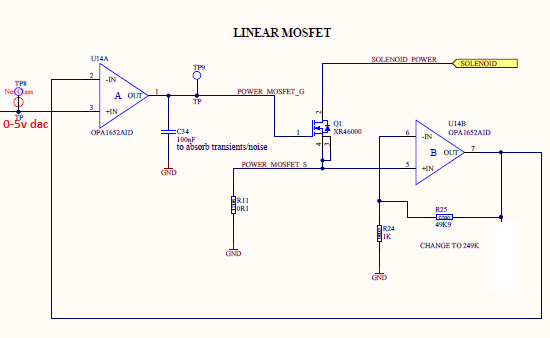Hi All,
I have this constant current sink which im using to provide a controled current 0-200mA but im having a few issues with it. i did have a 1kohm pulldown on the output but it caused the opamps to get quite hot so i removed it. The issue im having is that the output of the dac is being pulled down to 1v when it is connected to the input of the op amp. my question is...can i connect the output of the second opamp to the input of the first to give my negative feedback, like this below or have i caused some kind of latchup condition on the op amp?
Many thanks
Liam



